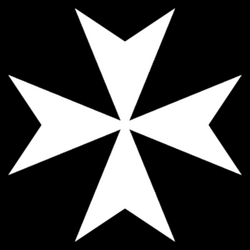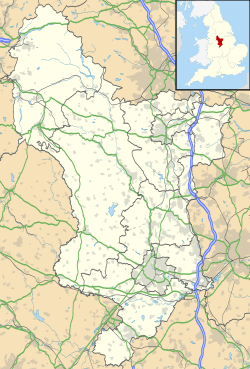Barrow Camera facts for kids

Cross of the Knights Hospitaller
|
|
| Monastery information | |
|---|---|
| Other names | The Joint Preceptory of Yeaveley and Barrow |
| Order | Knights Hospitaller |
| Established | Donation of land made in the reign of King Henry II (1154-1189) |
| Disestablished | 1543 |
| Mother house | Yeaveley Preceptory |
| People | |
| Founder(s) | Founded following donation by Robert de Bakepuze |
| Site | |
| Location | Arleston, Barrow upon Trent, Derbyshire, England, United Kingdom. |
| Coordinates | 52°51′47″N 1°30′04″W / 52.863°N 1.501°W |
| Visible remains | Remains incorporated into Arleston House Farmhouse. |
| Public access | Arleston House Farmhouse is private property. |
The Barrow Camera was a special building used by the Knights Hospitaller in Barrow upon Trent, England. The Knights Hospitaller were a Christian military order. They were like a group of knights who also helped sick people and pilgrims.
A "Camera" was a residence or office used by officials of the Knights Hospitaller. They used it for short visits to manage their lands and properties. The Barrow Camera was located in a small village called Arleston in Derbyshire. Some people used to confuse it with a different Barrow in Cheshire. But records show it was definitely in Derbyshire because it was connected to other religious places there. Also, its yearly rent was paid to the Bishop of Carlisle, who was in charge of the land in Barrow upon Trent.
History of Barrow Camera
The story of Barrow Camera began during the time of King Henry II (1154-1189). A man named Robert de Bakepuze gave the church and some land in Barrow upon Trent to the Knights Hospitaller. This gift was for their base, called Yeaveley Preceptory, which was also in Derbyshire.
Robert's son, John, later confirmed this gift and even gave more land. In return, the Knights Hospitaller held a special church service every Sunday for Robert's soul.
By the year 1338, the Camera was making money. It had a manager, called a bailiff, and earned about £30. However, it's thought that knights from the order probably didn't live there all the time.
Before 1433, the Barrow Camera officially became part of the Yeaveley Preceptory. It became very important to the Preceptory. Between 1503 and 1526, the place was often called "The Joint Preceptory of Yeaveley and Barrow."
The Preceptory and Camera were closed down in 1543. This happened during a time known as the Dissolution of the Monasteries. This was when King Henry VIII took control of many religious buildings and their lands in England. The property and lands of Barrow Camera were then given to Charles Blount, 5th Baron Mountjoy.
After the Camera was closed, the leader of Yeaveley and Barrow was chosen for an important role in Malta.
Building the Camera
The Camera building was constructed in the hamlet of Arleston. It was built on the same spot where Arleston House stands today.
In the late 1800s, a historian named Cox described a strong stone basement that was still there. It was from the 1300s and measured about 75 feet long and 21 feet wide. This was the basement of a large hall, which had strong supports called buttresses.
After the Dissolution, parts of the Camera were used to build Arleston House Farmhouse. This farmhouse was built between the 1500s and 1600s. Today, it is a Grade II Listed building. This means it's an important historical building that is protected.
Images for kids
-
Areleston House from across the Trent and Mersey Canal.




